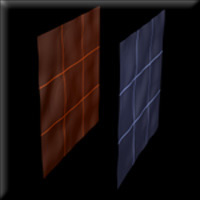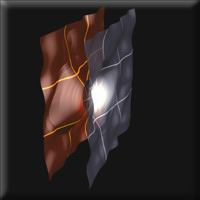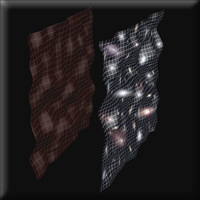Before the Big Bang
Part 2
Inflation seemed like a necessary complexity. Without it, the universe would look very different—for instance, galaxies on one side of the universe would be distributed differently from galaxies on the other side, which they don't appear to be. As inflation caught on, however, some cosmologists grumbled about epicycles. Then the Big Bang got even more complicated. Starting about five years ago, astronomers measuring the expansion rate of the universe discovered that billions of years after the Big Bang—long after inflation had died out—cosmic expansion started speeding up again. Theorists invoked another unknown energy field, called dark energy, to account for that cosmic acceleration. "This wasn't really predicted at all," says Steinhardt. "We can fit it into the model, but we don't know what this so-called dark energy is. The standard model is definitely becoming more encumbered with time. It may still be valid, but the fact that we have to keep adding things is a bad sign."
 |
Step One: EMPTY UNIVERSE
Each panel represents a three-dimensional membrane. The observable universe exists within the panel on the right; the other membrane is invisible to us. At the end of one cosmic cycle—after about a trillion years of accelerating expansion—matter is so spread out that space is essentially empty. This stage corresponds to the distant future of our universe. All is not static, however: The membranes still contain energy, and a force of attraction gradually draws them together again. |
Astronomical evidence clearly indicates that the observable universe has been expanding for the past 13.7 billion years. In the inflationary Big Bang model, the universe was hot and dense at the outset, and then immediately went through a period of hyperexpansion. Steinhardt and his colleagues considered a very different possibility: What if the universe actually started out cool and vacuous?
If that were the case, the idea of branes colliding in a hidden dimension might provide a simpler explanation for the ongoing expansion. To find out whether the idea made sense, the pair took on the daunting task of mastering the equations of superstring theory and applying them to their theory. For simplicity, the researchers assumed that the branes were flat and parallel to each other. They also assumed that the branes contained no matter. That didn't mean the branes were voids: Quantum theory asserts that even the total vacuum of empty space is seething with "virtual" subatomic particles that constantly wink in and out of existence. In aggregate, these virtual particles add up to a huge amount of latent energy—which, according to Einstein's theory of special relativity, is equivalent to an astounding amount of mass. So a crash between two empty branes would still be a collision of gigantic proportions.
 |
Step Two: FIERY COLLISION
As the two membranes draw nearer to each other, they ripple and distort so that the surfaces come together in different places and at different times. As the membrane surfaces crash into each other, vast amounts of energy are released (white zone). Called ekpyrosis—the Greek word for conflagration—the colossal collision gives birth to a baby universe in our membrane (right). The force of the impact causes space to expand rapidly and also pushes the two membranes apart. |
Whether that crash would create a fireball that led to a universe like ours was unclear. If it didn't, there was no point continuing with the calculations. "We spent a year and a half working on the theory incommunicado," says Turok, "and to be honest, we fully expected the whole idea to fall apart." They kept at it because if their theory did hold together, it would upend 40 years of cosmology studies, not to mention enshrine Steinhardt, Turok, and company in the pantheon of astrophysical giants. Besides, physicists say that if a theorist doesn't turn out to be wrong at least 50 percent of the time, he isn't being creative enough.
The idea didn't fall apart. After an intensive 18 months of higher math, the researchers learned that colliding branes could create a universe like ours. In the moments before a collision, their equations suggest, forces between two flat branes would cause them to ripple, as though the mirrorlike surface of a calm lake were suddenly covered with tiny waves. As a result, the two branes wouldn't collide all at once. Instead, the peaks of the ripples would hit first. This uneven crash would produce a correspondingly uneven burst of energy—a fireball with about the same intensity everywhere but a bit hotter where the peaks had been, a bit cooler in the valleys.
 |
Step Three: GALAXY-FILLED UNIVERSE
After the two membranes collide, they move apart. The initial fireball expands and cools, with the ripples of the membrane leading to the small temperature fluctuations in microwave background radiation observed in our universe. The subsequent sequence of events echoes the Big Bang model: Lumps of gas give rise to galaxies and other cosmic structures, and space continues to expand. This roughly corresponds to the current state of our universe. |
That's exactly what the universe looked like before the first stars ignited and the first galaxies formed. We know that because the Wilkinson Microwave Anisotropy Probe (WMAP), launched in 2001, recently revealed the pattern of hot and cold spots in the heat left over from the earliest days of the universe (see the January 2004 issue of Discover, page 37). In the Big Bang/inflation model, the hot spots are generated by quantum noise that is magnified by the inflationary energy field. "Much to our surprise, after doing these enormous, intricate calculations, we found out colliding branes would produce exactly the same pattern of temperature fluctuations," says Turok.
"It seemed almost miraculous to us that it turned out this way," says Steinhardt. The new idea was dubbed the ekpyrotic universe. Ekpyrosis means conflagration in Greek and refers to an ancient Stoic cosmological model in which the universe is caught in an eternal cycle of fiery birth, cooling, and rebirth.
The research team subsequently turned its attention to what would happen in the branes after a collision. Calculations suggested that the crash would generate a universe-wide fireball of pure energy within each brane. That blast would drive the two branes apart again. Then, as the fireball suffusing our brane began to cool, its underlying energy would undergo a phase transition, like water freezing into ice. This transition would unleash a force that would make the universe start to expand. The hot spots of the fireball would congeal into clumps of matter that would eventually become clusters of galaxies. The cold spots would become the empty voids that lie between the clusters.
Part 3 --> | 1, 2, 3
|

